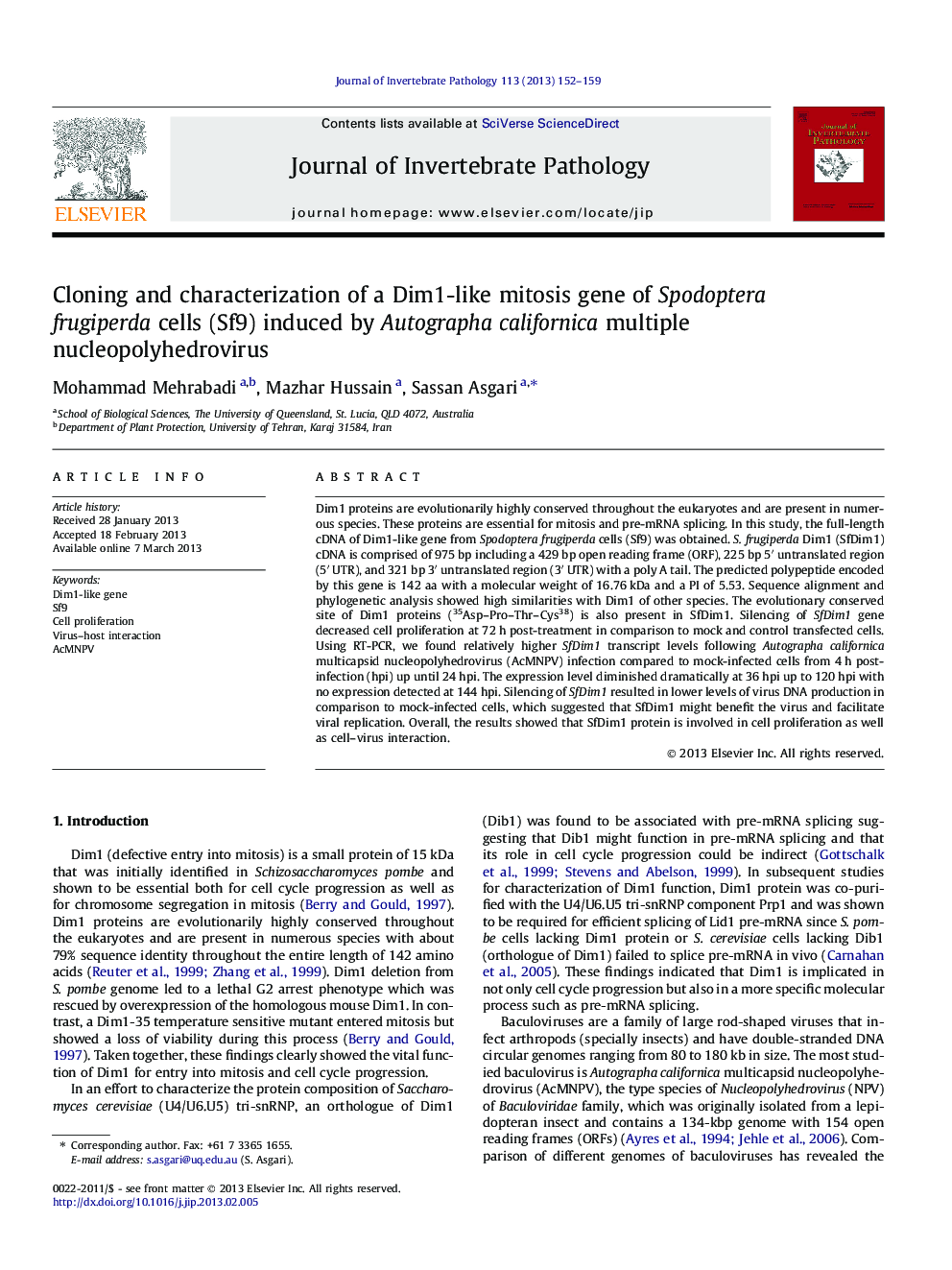| Article ID | Journal | Published Year | Pages | File Type |
|---|---|---|---|---|
| 4557850 | Journal of Invertebrate Pathology | 2013 | 8 Pages |
•A conserved Dim1 gene from Spodoptera frugiperda was cloned and characterized.•Silencing of SfDim1 led to reduced cell proliferation.•SfDim1 was significantly induced following baculovirus infection.•Silencing of SfDim1 led to reduced baculovirus replication.
Dim1 proteins are evolutionarily highly conserved throughout the eukaryotes and are present in numerous species. These proteins are essential for mitosis and pre-mRNA splicing. In this study, the full-length cDNA of Dim1-like gene from Spodoptera frugiperda cells (Sf9) was obtained. S. frugiperda Dim1 (SfDim1) cDNA is comprised of 975 bp including a 429 bp open reading frame (ORF), 225 bp 5′ untranslated region (5′ UTR), and 321 bp 3′ untranslated region (3′ UTR) with a poly A tail. The predicted polypeptide encoded by this gene is 142 aa with a molecular weight of 16.76 kDa and a PI of 5.53. Sequence alignment and phylogenetic analysis showed high similarities with Dim1 of other species. The evolutionary conserved site of Dim1 proteins (35Asp–Pro–Thr–Cys38) is also present in SfDim1. Silencing of SfDim1 gene decreased cell proliferation at 72 h post-treatment in comparison to mock and control transfected cells. Using RT-PCR, we found relatively higher SfDim1 transcript levels following Autographa californica multicapsid nucleopolyhedrovirus (AcMNPV) infection compared to mock-infected cells from 4 h post-infection (hpi) up until 24 hpi. The expression level diminished dramatically at 36 hpi up to 120 hpi with no expression detected at 144 hpi. Silencing of SfDim1 resulted in lower levels of virus DNA production in comparison to mock-infected cells, which suggested that SfDim1 might benefit the virus and facilitate viral replication. Overall, the results showed that SfDim1 protein is involved in cell proliferation as well as cell–virus interaction.
Graphical abstractFigure optionsDownload full-size imageDownload as PowerPoint slide
